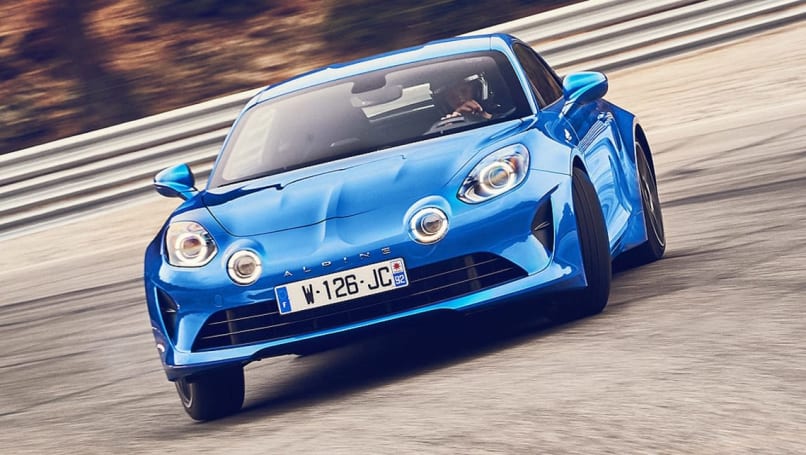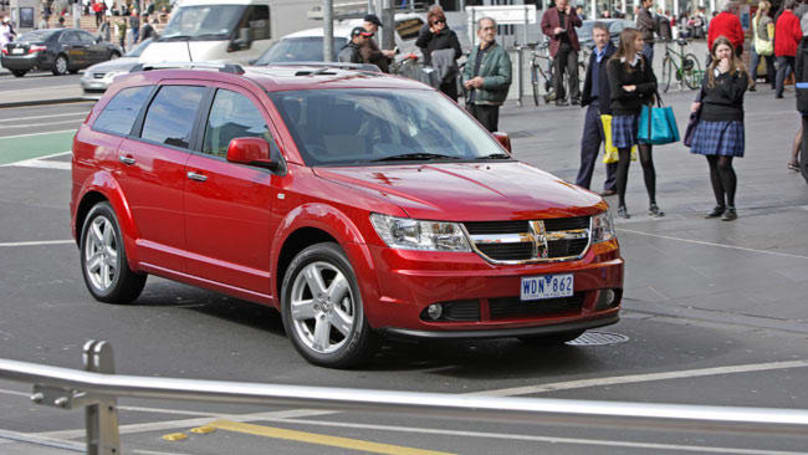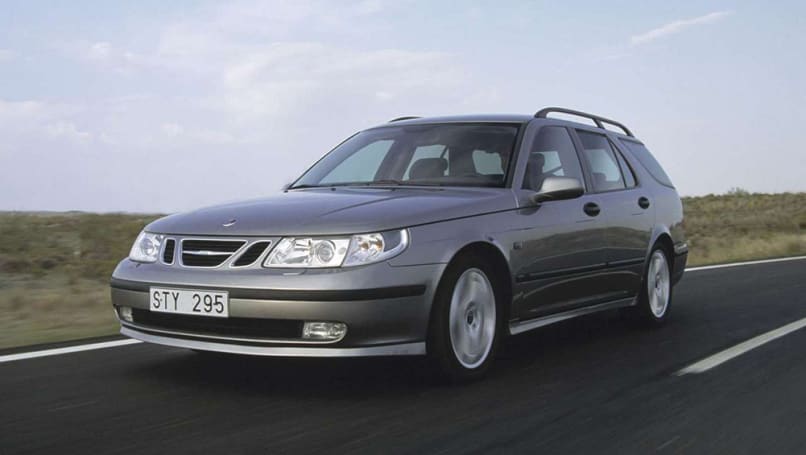
Watch out, Audi! How Lexus staged a sales comeback in 2023 off the back of updated Lexus RX, NX and UX SUVs
The cold, hard facts of the 2022 sales data were not good for Lexus. The brand...
Browse over 9,000 car reviews
.jpg)
Australia is often lauded as one of the most competitive new car markets in the world, with more than 40 brands fighting for slightly more than one million sales per year.
So naturally not everyone can survive in this cut-throat environment and we’ve seen several high-profile brands disappear in the past decade. Obviously the most memorable is Holden, but that’s only the tip of the iceberg, with five other brands also shutting up shop in recent memory - Chrysler, Dodge, Infiniti, Saab and Chery.
However, the latter is preparing to make a comeback, with Chinese car maker Chery declaring its intention to re-enter the market in 2023. The brand is hoping to learn lessons from its earlier, short-lived attempt at cracking the Australian market, with plans for local testing to ensure its cars suit local conditions.
As per our previous reporting, Chery plans to begin sales with three models - the Tiggo7 Pro compact SUV, the Tiaggo8 mid-size SUV and the Omoda5 electric SUV.
Of course, it’s not all bad news as more brands have also arrived to take the place of those that left. Since 2012, we’ve also seen the emergence of new or renewed names, including Ram, MG, LDV, Polestar and, most recently, Cupra.
But what about those we’ve lost, are any of them like to join Chery in making a comeback?

Alpine has a Formula One team (and may even have an Aussie driving for it, depending on what the lawyers decide) and plans to win the famous Le Mans 24-hour race - what it doesn’t have is a car it can sell in Australia.
The French performance car spin-off from Renault sold the under-rated A110 mid-engine sports car from 2018 with modest success, but changes to the Australian Design Rules in November 2021 meant the brand would have to re-engineer the car for a new side impact test. It was simply too costly to justify so the brand has effectively gone into hibernation.
The good news is Alpine has more than just race teams, it also has a plan to build a range of electric performance cars, including a battery-powered successor to the A110, a hot hatch and an SUV. Given we got to the A110 on its own, there’s reason to hope that the brand will eventually relaunch here with an expanded range.
Comeback chances: 90%

The most recent departure was arguably a long time coming, with the brand slowly losing models until only the 300 sedan remained. It struggled on alone until November 2021 when the American brand seemingly ran out of people wanting a chunky, V8-powered sedan.
It was a sad end for a brand that was once incredibly popular and considered one of Australia’s ‘Big Three’ alongside Holden and Ford in the 1960s and ‘70s, producing iconic models like the Pacer and Charger. But in its final years in Australia was instead selling underwhelming and poorly-made vehicles like the Sebring convertible, PT Cruiser and Voyager people mover.
Even in the US market, Chrysler only offers the ageing 300 and newer Pacifica people mover, so it’s not yet in a position to think about a comeback. However, there are reportedly plans to try and revive Chrysler with an electric future.
It revealed the striking Airflow concept, an all-electric SUV that would compete against the likes of the Ford Mustang Mach-E, Audi e-tron and Tesla Model Y in the US. It’s reportedly not due to hit the market until 2024 at the earliest, so any Australian comeback wouldn’t be until closer to the end of the decade - if at all.
Comeback chances: 40%

The demise of Holden has been well-documented, so we won’t pick over the pieces again in detail. Needless to say, General Motors’ decision to prioritise left-hand-drive markets - specifically the US and China - was bad news for the Lion Brand.
Once the European operations (Opel and Vauxhall) were sold off, it seemed inevitable that Holden would either be offloaded (which GM tried to do) or shuttered.
For these same reasons, it seems there’s an almost zero chance of GM ever deciding to revive the Holden badge - at least in not any significant way - because all of the same factors look set to remain in play, most notably the relatively low volume of right-hand drive cars compared to left-hand drive.
Plus, General Motors has established General Motors Specialty Vehicles (GMSV) to retain a foothold in this market, albeit at a smaller volume, with the Chevrolet Corvette and Silverado models.
Comeback chances: 0.1%

Infiniti started off badly and never recovered, unfortunately demonstrating to brands like Genesis, Polestar and Cupra a ‘what not to do’ template for launching a new, premium car brand in this market.
It was meant to be Nissan’s answer to Lexus, a luxury off-shoot from a mainstream Japanese brand that would slowly but surely become a rival to the likes of Audi, BMW and Mercedes-Benz. But it launched in 2012 with ageing models and failed to establish a unique selling point, so there was no compelling reason for buyers to take the leap to a new brand.
It opened five dealerships (two in Sydney, two in Melbourne and one in Perth) in a short time and in odd locations. Put simply, it was too much, too soon and without seemingly any convincing plan to woo customers from the established names.
Bizarrely, it tried to position itself as a sporty brand at a time when it was a major sponsor of the championship-winning Red Bull Racing Formula One team, with Australian drivers Mark Webber and then Daniel Ricciardo. And yet, it never leveraged this obvious connection and marketing opportunity.
Australia wasn’t its only failure though, Infiniti also pulled out of Western Europe at the same time (late 2019) and is now focused on - you guessed it - the left-hand drive US and Chinese markets.
The chances of a comeback anytime soon would seemingly be none given the unhappy memories locally and left-hand drive focus.
Comeback chances: 5%

Like sister-brand Chrysler, Dodge had a long, slow departure from the Australian market with models falling one-by-one until just the Journey SUV/people-mover remained. When it was retired at the end of 2016 it took the Dodge brand with it, a shame given it had had a presence here since 1915.
At the time, the then-head of Fiat Chrysler Australia (now part of the Stellantis Group) made positive noises about reviving it with its Charger and Challenger muscle cars when the next generation arrived. Those next-gen models are reportedly (finally) in development now and will ditch the famous V8 engine for electric motors.
These so-called ‘eMuscle cars’ would seemingly be an ideal pair of models to relaunch Dodge in Australia, signalling the start of a new era while appealing to the brand’s heritage. However, for now it appears the focus is still on getting these cars right in the US before any export plans.
Comeback chances: 50%

When it launched in 2012 the German brand was meant to live alongside stablemate Holden, as a semi-premium alternative, similar to the likes of Volkswagen and a rising Mazda. However, the initial line-up consisted of the Corsa, Astra and Insignia, a trio of cars that had at one point or another in their history all been sold locally as Holdens (Barina, Astra and Vectra respectively). So it was a confusing business model for some, but that wasn’t really the biggest problem with Opel’s line-up.
The obvious missing pieces were SUVs, with none available at a time when buyers were flocking to them in droves. It didn’t help that in the small car market the Astra was simply one more model in a very crowded market with some very famous, very popular nameplates, including the Toyota Corolla, Mazda3 and Volkswagen Golf.
The decision to drop the Australian operation in August 2013, less than a year after it had arrived.
Opel is now part of the Stellantis conglomerate and is transitioning to an all-electric line-up, recently launching a new-generation Mokka small SUV with an attractive new design language. While there has been no official word, it has recently announced plans to try its luck in New Zealand, so it could open the door for Australia too. Especially when you consider that Opel also builds all models for the British Vauxhall brand, so right-hand-drive production shouldn’t be as problematic as it is for other brands.
Comeback chances: 65%

Sweden’s other brand enjoyed some successful years in Australia, albeit as a niche luxury alternative. It may have never been as big as BMW or even Volvo, but Saab had a loyal following and produced some interesting and well-designed models, including the 900 and 9-3.
Then General Motors got involved in the late 1980s with plans to turn it into its own European luxury brand. By the 2000s it was sharing platforms with Opel and had lost much of its unique appeal and entered what became a terminal decline.
Despite launching the all-new, second-generation 9-5 in 2010, General Motors off-loaded the brand to Dutch niche supercar maker, Spyker. By January 2013 Saab Australia was in receivership with reported debts of $2 million, a small amount compared to its global problems.
A Chinese consortium under the name National Electric Vehicle Sweden (NEVS), attempted to revive what was left of Saab Automobile but it fell over by 2014. The name was then sold on to Evergrande Group, a giant Chinese property consortium now famous for defaulting on its debt and causing a years-long property sector crisis.
Comeback chances: 0%










Comments